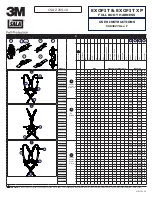
Selecta: User Manual_______________
23
important to notice that the maximum dosage accuracy is detected by the dosing
scale; even if the line has a higher accuracy, the system does not provide better
performance. In case the dosing system is more accurate than our weighing and
labelling machine, the adjusting mechanism compensates possible disturbance
which value is at most the same as the division of our scale.
On a quality level, the adjusting process is carried out as follows: some pieces are
let go at the process start, then the machine calculates the average of the last N
transited pieces; if the average moves away, in any direction, from the nominal
weight for a higher quantity of a settable threshold, special digital signals are
enabled to control a dosage change in the upstream machine; such variation can
follow two different criteria. It is possible to set the thresholds outside which the
products are not used to calculate the average. As there can be products already
dosed but not weighed (those between the dosing scale and the line), on them the
effect of the adjustment cannot be observed, so their weight is not taken into
consideration for the following cycle of adjustment. And, as the dosing machine
has a startup time, it is possible to program an amount of initial pieces to be not
included in the adjusting process. All parameters that must be set to configure the
adjusting process are described below.
There are two possible adjusting modes:
BY IMPULS.
: the adjustment is carried out sending pulses; at every pulse the
machine corrects the weight as previously set.
BY DURAT
: the adjustment is carried out keeping the output signal high for a time
proportional to the weight variation to control.
For each product (in PLU and in PROCESS), in the FEEDBACK group, the
following adjusting parameters can be specified:
FEEDBACK: enables/disables selective feedback for each PLU.
CORRECTION: it is the weight which, added to the nominal weight, determines
the aimed weight, that is a value compared with the average adjustment to
determine the value of the adjustment itself.
UPPER LIMIT: packages which weight exceeds the upper limit are not processed
to calculate the average adjustment weight.
LOWER LIMIT: packages which weight is below the lower limit are not processed
to calculate the average adjustment weight
UPPER TOLERANCE: if the average adjustment weight is between the aimed
weight and the aimed weight together with the tolerance, the regulator is not
enabled.
LOWER TOLERANCE: if the average adjustment weight is between the aimed
weight minus the tolerance and the aimed weight, the regulator is not enabled.
AVER.PIECES: number of packages to be used to determine the average
adjustment weight, reached via moving average.









































